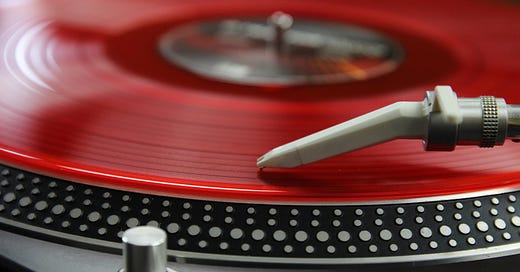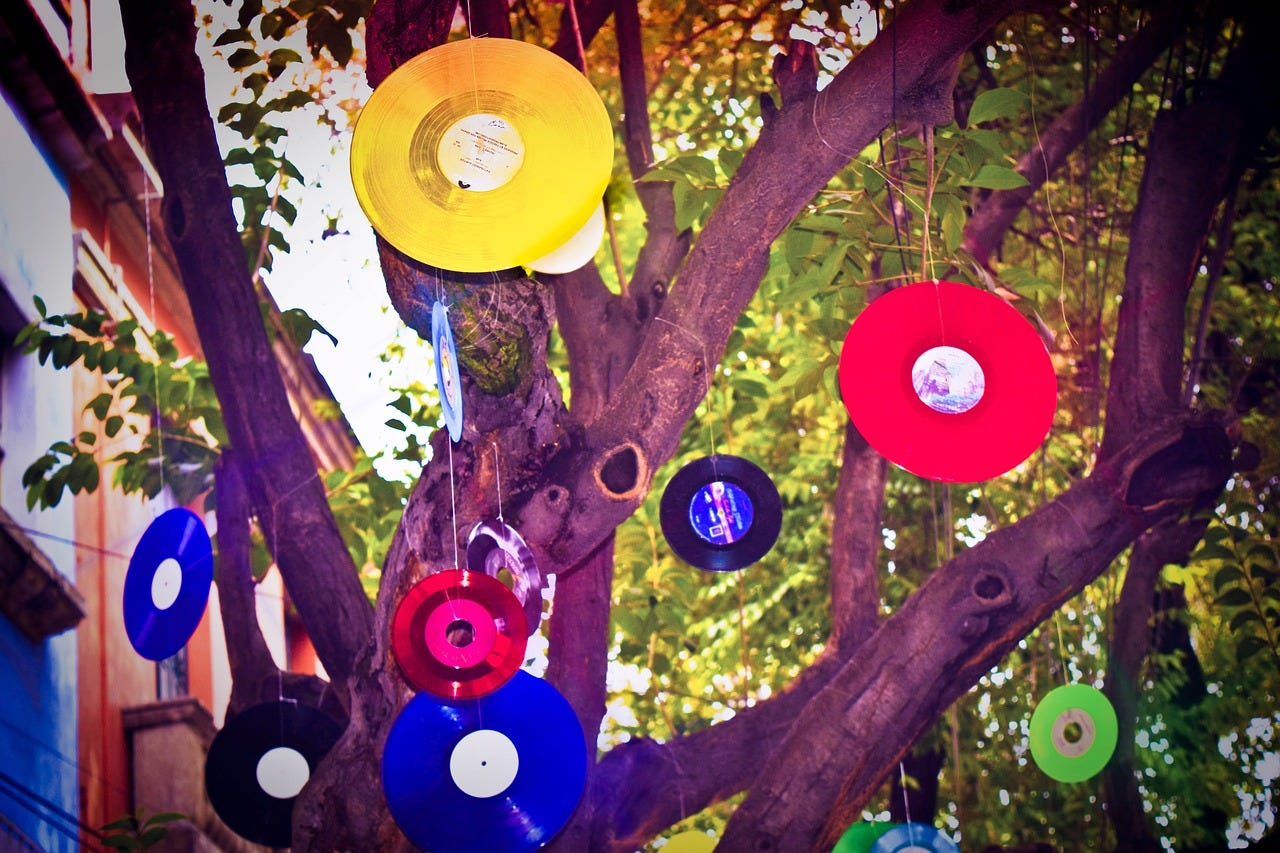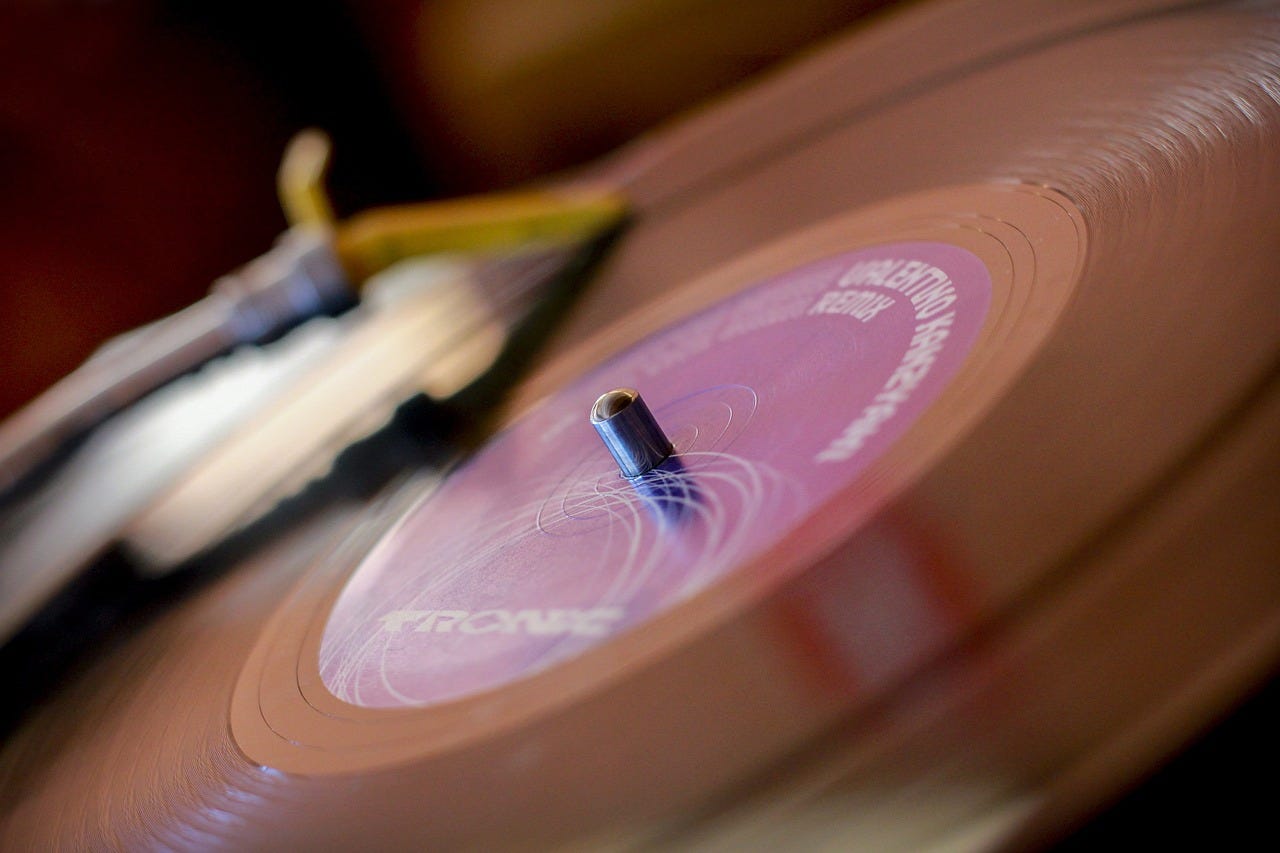Coloured vinyl: the hype, the myths, the facts
This is part one of a series exploring all you need to know about coloured vinyl and picture discs. Do they sound better, worse, or the same? Are coloured records worth more? Let's dive in...
During the golden years of vinyl, coloured records were regarded as unquestionably inferior. They were quite rare, and, more often than not, treated with a certain degree of scepticism (if not disdain) by most audiophiles.
Generalisations aside, it is fair to say that, back then, the sound quality of coloured vinyl was consistently worse than that of standard black vinyl.
With the vinyl revival, coloured records have seen unprecedented levels of growth, particularly in the last five years. Record labels, artists, casual listeners and even experienced collectors now all seem to embrace coloured vinyl almost without hesitation.
Red, white, pink, clear, blue, green, splatter colour… you name it. Even picture discs, which were once seen as something of a novelty, are now almost as ubiquitous as standard black vinyl.
With coloured records now a staple of modern life, the manufacturing and quality control processes involved in their creation have become more sophisticated (or at least, standardised). It is therefore no longer possible to categorically affirm that their quality is always inferior. Slightly different is the case of picture discs, although there have been some improvements since they first burst onto the scene.
Apart from the obvious aesthetic appeal of a coloured vinyl complementing an album’s artwork and giving artists an extra vehicle to express themselves, coloured vinyl has gained ground as a collectible item in its own right. Certain album releases will now include a standard black vinyl version, a blue vinyl version, another in red, pink, and so on.
Regardless of your views on coloured vinyl, its success as a marketing gimmick is undeniable. All of a sudden, your collection is not “complete” if you don’t have the “opaque blue” as well as the “velvet red” vinyl editions of the same album, and don’t you dare forget the picture disc, standard black vinyl and clear translucent editions.
But is coloured vinyl really worth it?
You can imagine how record labels would answer this question, seeing as coloured vinyl serves as an additional and substantial revenue source in the midst of the streaming age. It is no wonder record labels and some artists are capitalising on the popularity of coloured vinyl and picture discs in order to boost record sales (I’m naming no names, as most major pop and rock artists are, to some extent, guilty of this).
We vinyl lovers sometimes like to think that vinyl is a format that has survived all these decades because of its superiority and timeless appeal. While there is of course an element of truth in this, don’t let this peaceful, idyllic and romantic view distract you from the fact that vinyl hasn’t survived untouched. As part of its reincarnation deal, vinyl has had to adapt to the consumer habits and expectations of a society dominated by social media.
In order for vinyl to coexist successfully as a medium of mass music consumption and be able to compete with the likes of Spotify, Apple Music and YouTube, it has had to reinvent itself and dress appropriately for modern times. A coloured vinyl or picture disc will always be more instagrammable, regardless of how well it sounds and no matter what the audiophiles of this world may think.
My intention will never be to persuade you one way or another. One of the reasons why I started this Substack is to share my knowledge and experience so that you can make informed decisions that work for you and your specific circumstances. I will never tell you don’t buy this record or stay away from this turntable (well, maybe briefcase style turntables). Now seriously, the idea is to give you some tools to enable you to see beyond what’s fashionable and pretty and to listen with your own ears regardless of what the full-time audiophiles of this world will want you to hear. This is a space where we can share our views freely and learn from each other.
But the reality is that we cannot embark on the process of analysing coloured vinyl and picture discs without first having an honest discussion about the commercial role they play.
One of the reasons why coloured vinyl and picture discs have become so frequent in recent times is in great part in order to lure customers who would perhaps otherwise never think of setting foot in a record store. This is not necessarily a bad thing, as we all benefit from a thriving vinyl community. But sadly, coloured vinyl is also being used as a persuasion tool so that some customers can justify (or feel less bad about) buying physical records when they could easily listen to them on streaming platforms. And I’m sorry, but vinyl should never have to prove its worth, and you should never feel like you have to justify why or how you spend your hard-earned money (on records or on whatever you like).
What’s more, different issues of the same album (and reissues a couple of years later) have traditionally served the purpose of either catering to a specific market and/or offering something different (for example in the mastering of the album itself). Hence why you tend to have issues per country and the occasional reissue throughout the years.
The hype with coloured vinyl and picture discs means that some albums are getting reissued purely for purposes of selling a coloured or funky version of the disc. Not to mention new releases that come in a variety of different colours as the only differentiating factor. There is no judgment here, but you need to be aware of this as part of your decision-making process. The difference between some of these editions is simply the colour the disc is painted with. That’s it.
While coloured vinyl has existed for decades, it now seems to bring this tacit, implied notion with it that what you are buying “is not just a vinyl record”. As a vinyl lover, I cannot stand idly by while the format we all learned to love so deeply gets a little bit of a bashing. Records are not meant to look “pretty”. They get dirty, their image hasn’t changed in decades, they all look roughly the same. They have surface noise, they require careful handling and proper maintenance. Their beauty lies elsewhere. They can be worth pennies or thousands depending on who’s paying, who’s looking and who’s listening.
By all means, please don’t think I hate coloured vinyl, on the contrary: I own several coloured vinyl records and picture discs, which I choose to buy for specific reasons as part of my collection strategy. In fact, many of my most valuable vinyl records are coloured. I for one have benefited massively from this “hype”. But we cannot be naive and think that their appearance is entirely innocent, let alone coincidental.
So back to whether coloured vinyl is worth it… as you can probably imagine, there is no straightforward answer to this question, as it turns on a variety of factors, and we cannot ignore the role that coloured vinyl and picture discs play in modern vinyl consumption. Nor can we ignore the specific purpose they may serve for you as a listener or collector.
While some of these factors are more or less objective (or at least, they can be supported by factual data), ultimately there will always be a subjective element at play. What you hear or read about a certain record, how it is presented to you, and how much you paid for it are all bound to have an impact on your listening experience. You cannot fully or easily emancipate yourself from your expectations and whether (or how) reality lives up to them.
For purposes of this series of articles on coloured vinyl and picture discs, I have decided to focus on objective data, and specifically, on the two aspects I believe my readers are most likely to be interested in: sound quality and potential resale value.
Over the next coming weeks, I will be following up with part 2 and part 3 of this series. I wanted to make this introduction, first and foremost, to provide a little bit of context, but also to check if there are any other aspects of coloured vinyl and picture discs that you would like me to cover. If so, please let me know in the comments and I’ll make sure to include them as we go along.
That’s all for now. Stay tuned for more. Thanks a lot for reading and/or listening and, as always, happy spinning!








Kudos again, Andy! Once again, you nailed it perfectly! As one who was there, I can happily vouch for the feelings about colored (sorry, I'm in America....I love "u" madly😍, but have never spelled it that way) vinyl and pic discs. I will tell you (from my memories), there was a definite belief, if not realization, that vinyl quality was far lower with these.
I don't recall record co. reps addressing it, or any "official" info on the quality of the records, either "street" editions or promos. I do seem to recall a disclaimer on some, if not all...something to the effect (it would've been on the back of the jacket) of "Not intended for play." I wish I could verify that (I sold my collection at the turn of the century).
I also seem to recall a vivid conversation with fellow record store employees (late '70s) about the paper that had to be sandwiched in between what had to be two slices of vinyl on a pic disc (still not sure of the actual composition of a pic disc)!
Requests, please: It sounds like you're closing in on a dive into the secondary market, and all the strategies/cautions out there for that slice of the vinyl. Great! Also, maybe an expose on the physical construction of a pic disc (and maybe even a colored and/or swirled disc, and just how they're made! If there is swirling, is it constant and identical, or is each one necessarily different?)
Also, the mystery behind the matrix numbers etched into the run-out grooves of both LPs and 45s. There are some mysteries, some hidden personal notes, and the pedestrian record company cataloguing digits that have to be there. Inquiring vinyl minds wanna know!
Also, I have a deep, abiding fandom for the jacket spine....a whole world of rationale, purpose, and even art about a part of the record few notice, and even fewer appreciate! If you get to that, holla back, yo...I have 2 cents I'd like to contribute! Hamlet, you're a prince!🤴